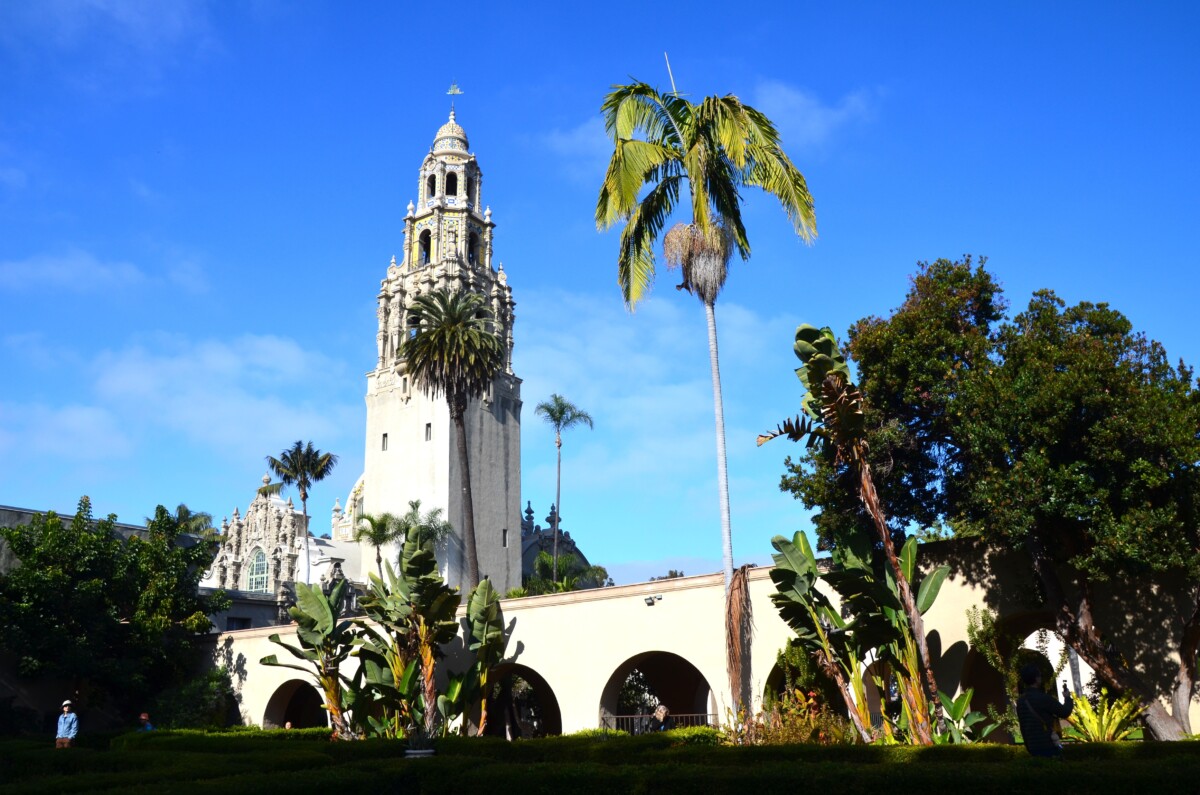I love San Diego. When leaving Palm Desert, we didn’t want to head straight back to LA. Instead, we drove to San Diego and spent a few hours walking around Balboa Park, then visited the sea lions and harbor seals at La Jolla.
Our children barely remember our previous trip to San Diego when they were five years old. Thing 1 vaguely recalled going to the San Diego Zoo, while Thing 2 remembered having s’mores at the hotel in Carlsbad. With just a few hours in San Diego on this trip, we decided the best bang for our buck would be to take them to Balboa Park.
Balboa Park
Set aside as green space in 1868, City Park encompassed 1,400 acres in San Diego. After the name change to Balboa Park, city leaders used the park to host the 1915 Panama-California Exposition. The city had to build lots of buildings and many were considered temporary. Check out pictures and archives of the event at pancalarchive.com.
The park’s use changed dramatically at the onset of WWI. The US Navy used the park for a training ground for sailors. By 1921, the site became a park again.
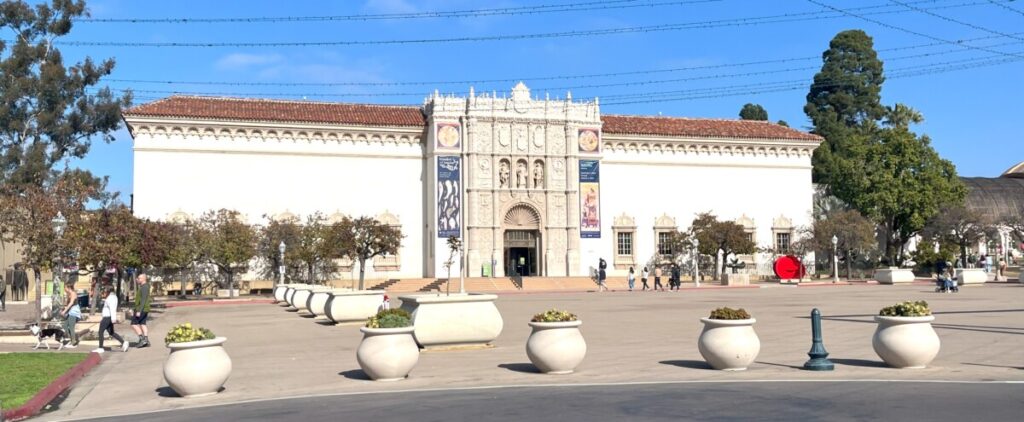
Two decades later, the California-Pacific International Exposition drew 6.7 million visitors back to Balboa Park in 1935-1937. Corporations like Shell, Standard Oil, and Ford built buildings just for the expo. You can see pictures here at sandiegohistory.org.
Today, Balboa Park encompasses 18 museums, multiple gardens, the San Diego Zoo, and many historic buildings. At 1,400 acres, it’s larger than NYC’s Central Park.
Palm Canyon
After finding parking near the Spreckels Organ Pavilion (more on that later), we walked over to the Palm Canyon. If you weren’t looking for it, you’d miss it because it’s below street level.
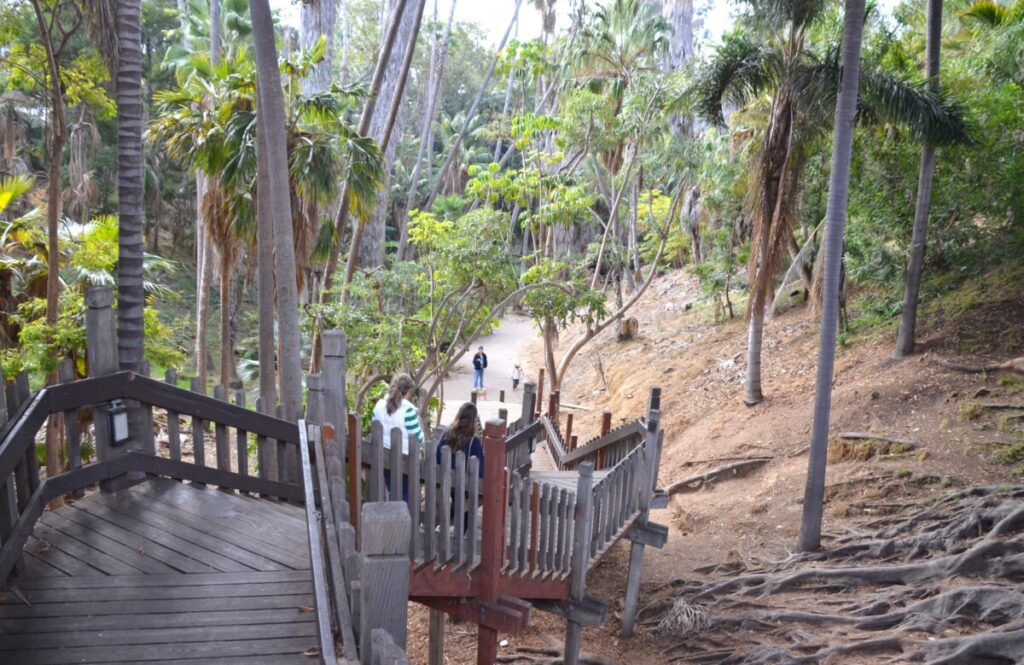
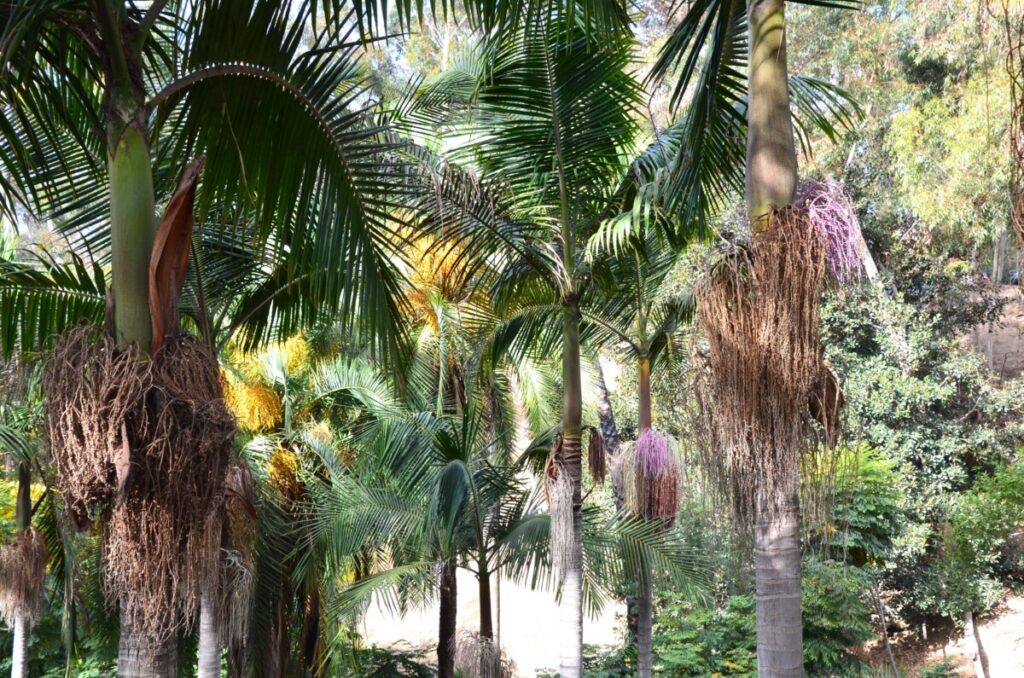
A series of wooden steps led us down into the 2-acre canyon. With over 450 Mexican fan palms surrounding us on the dirt paths, we forgot we were still in a large urban part of San Diego. Kate Sessions, known as the “Mother of Balboa Park,” planted these palms in 1912 to beautify the once-bare area. In addition to palm trees, we walked past huge fig trees with large roots.
Around Balboa Park
Back to street level, we ventured over to the Spreckels Organ Pavilion. The site is home to one of the largest outdoor pipe organs ever built. Constructed in 1914, the organ contains close to 5,000 pipes. Visitors can attend free concerts every Sunday.

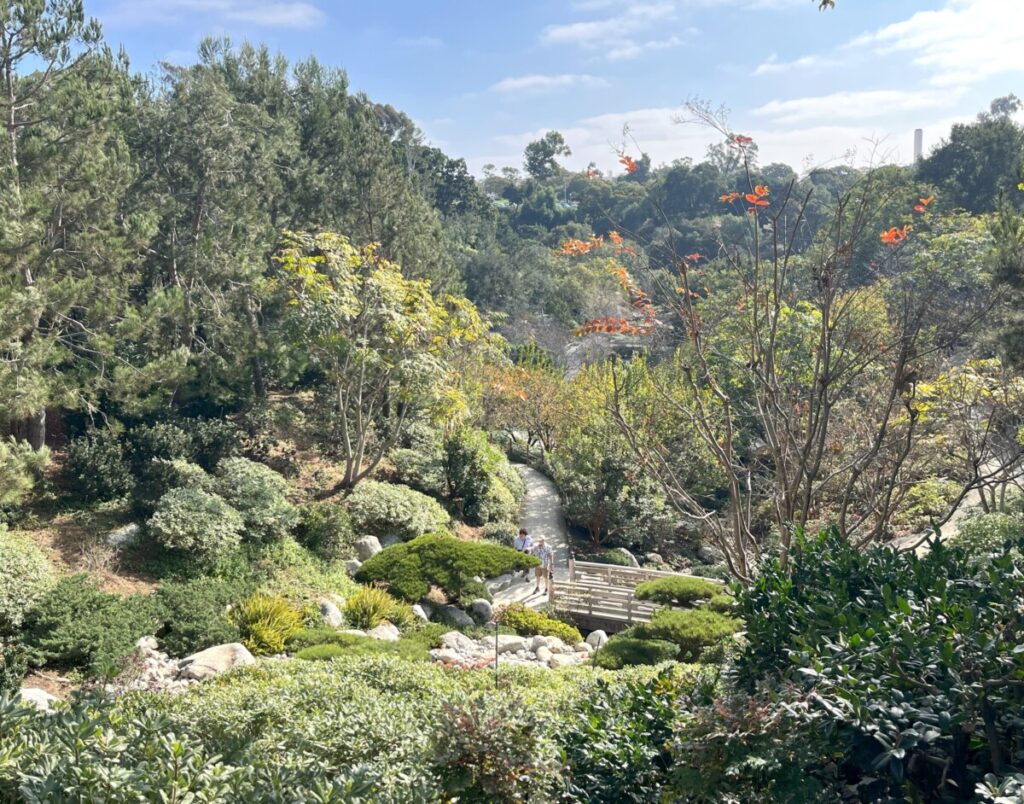
While we didn’t have time to venture into the Japanese Friendship Garden, I did some research along the way. Built for the 1915 Expo, the original Japanese teahouse and gardens became a lounge for the nearby Naval Hospital during WWII. After the war, vandals destroyed the building. Officials tore it down to make way for the Children’s Zoo (now part of San Diego Zoo). Decades later, the current Japanese Friendship Garden & Museum opened further south on 12 acres of land (adjacent to the Organ Pavilion). With several expansions, it now encompasses a museum, koi pond, azalea garden, camellia garden, and cherry tree grove. Admission is $16 per person. Guests can dine at the Tea Pavilion without paying admission. Of course, I stopped for a cup of tea with a view overlooking the sunken gardens!

Another prominent building is the House of Hospitality, which houses the Balboa Park Visitor’s Center and a small gift shop. It was initially constructed as the Foreign Liberal Arts Building for the 1915 Expo. In 1935, the building became the House of Hospitality and welcomed President Franklin Roosevelt during the 1935-1936 Expo. By that time, an inner courtyard stood in place of the large central hall. Due to safety concerns in 1997, the City rebuilt the building (using steel structural supports instead of wood) in the style the building resembled at the 1935 Expo. The Prado Restaurant and the Prado Perk are located here, and you can eat sandwiches in the interior courtyard.
California Tower
One of Balboa Park’s most prominent landmarks is the California Tower and Building. The Spanish Colonial Revival structure incorporates Rococo, Baroque, and Gothic elements, including a blue and white tiled dome. Architect Bernard Goodhue designed the California Quadrangle, which consists of the California Tower and Building, courtyard, St. Francis Chapel, and the Fine Arts Building (now Evernham Hall), as the entry point to the 1915 Expo.
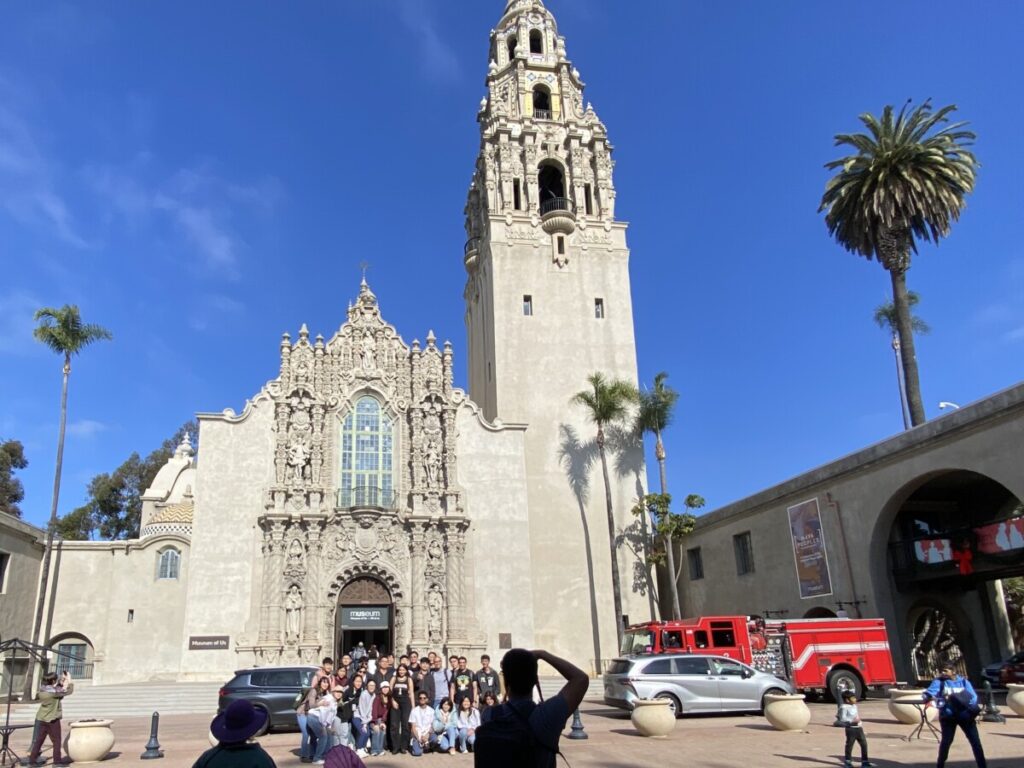
The Picirilli Brothers adorned the 198-foot tower with exquisite marble carvings of Junipero Serra, Father Luis Jayme, King Philip III of Spain, and other prominent figures. Hailing from Italy, but living in NYC, the brothers later carved the statue of Abraham Lincoln at the Lincoln Memorial in DC. The following pictures don’t do justice to the details of their handiwork.
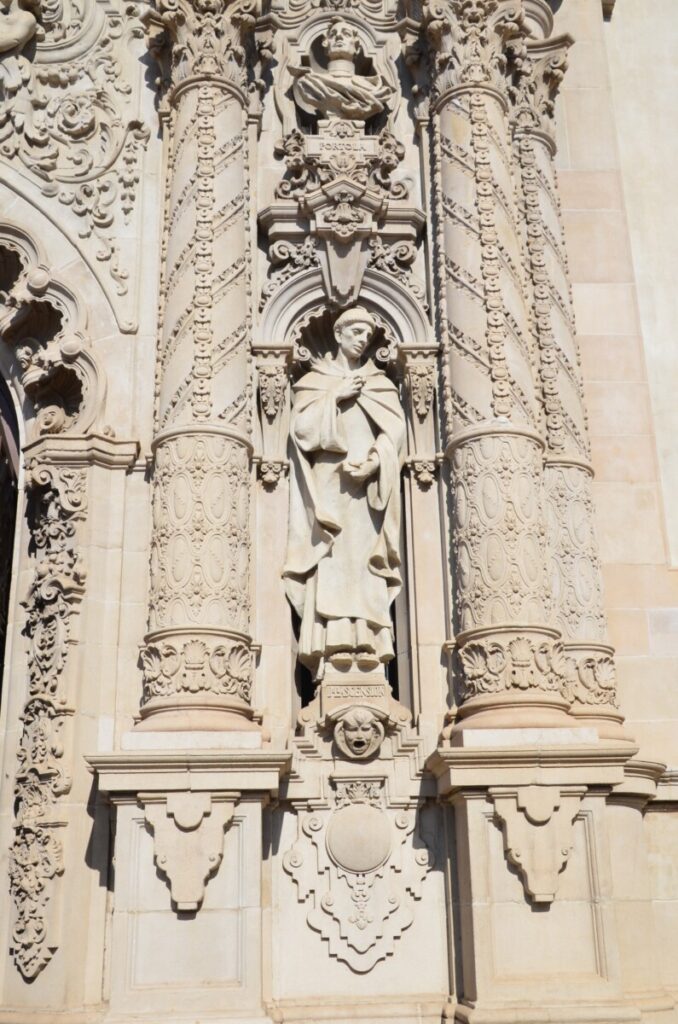
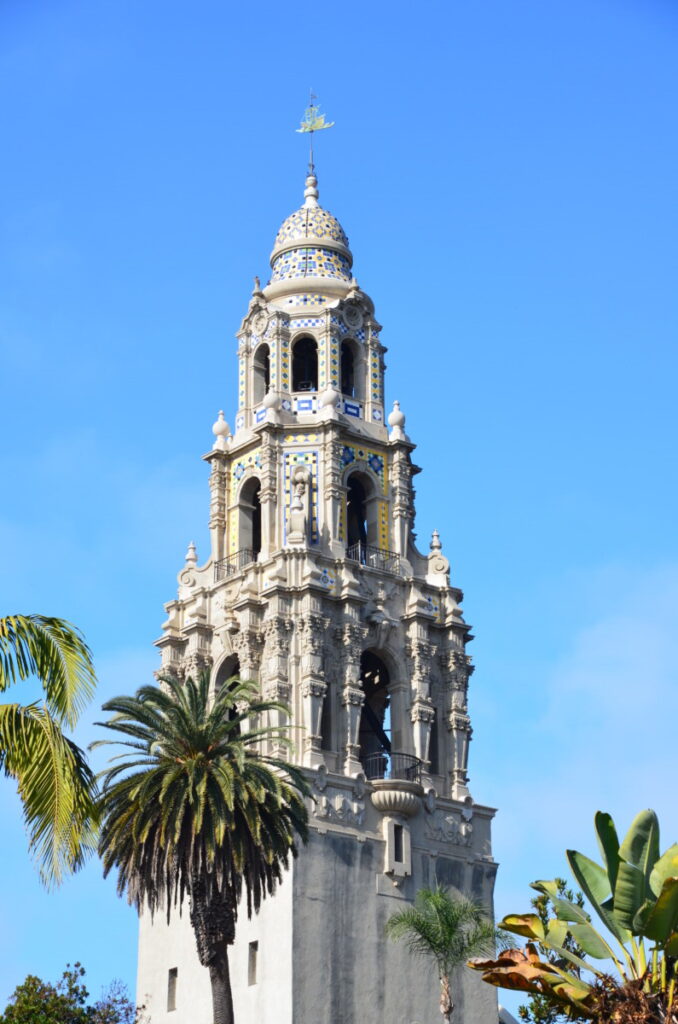
Believe it or not, the tower closed in 1935 and didn’t reopen to the public until 80 years later. Today, the California Tower and Building is home to the Museum of Us, a museum dedicated to culture and human anthropology. Visitors can climb up 125 steps to the first deck platform on small, guided tours to take in sweeping views of Balboa Park and San Diego.
Botanical Building
With no line or admission fee, the Botanical Building beckoned us to visit. One of the original structures of the 1915 Expo, the building houses various tropical and sub-tropical plants from around the world.
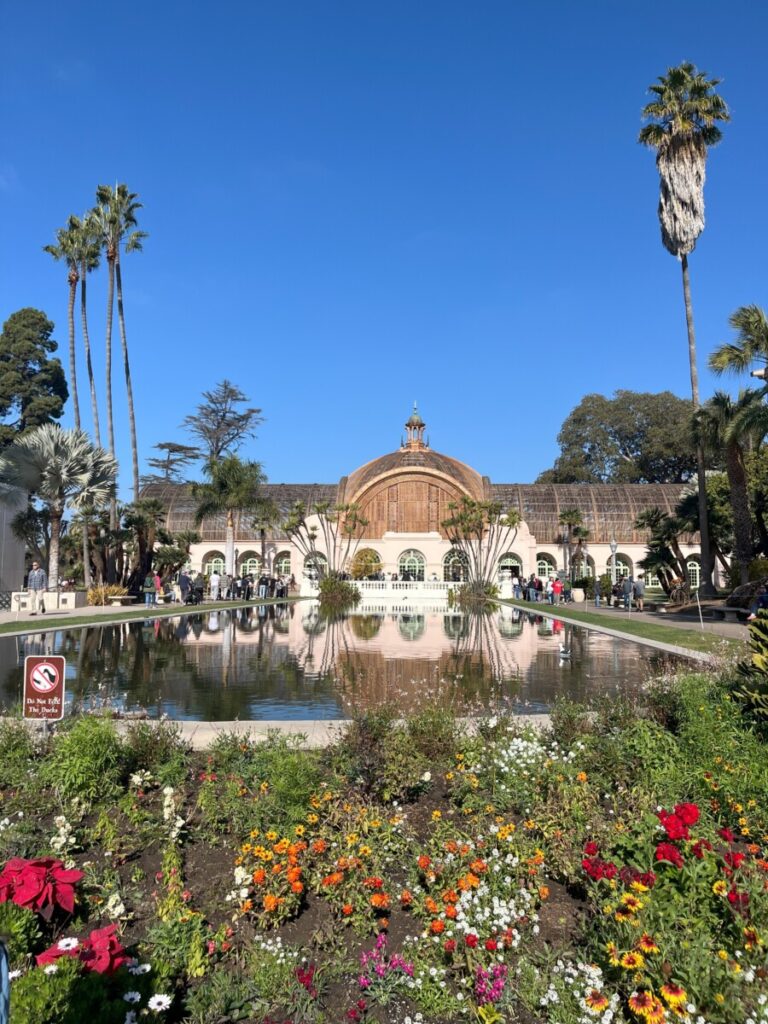
An east and west wing flank both sides of the symmetrical building. Wood strips create a curved trellis on the ceiling. That, plus large Palladian windows, creates a bright space housing over 2,100 plants. Outside, a lily pond creates a beautiful backdrop for photos. During WWI, sailors practiced swimming in the lily pond. Then, in WWII, the Naval Hospital used the pond for patients’ rehabilitation purposes.
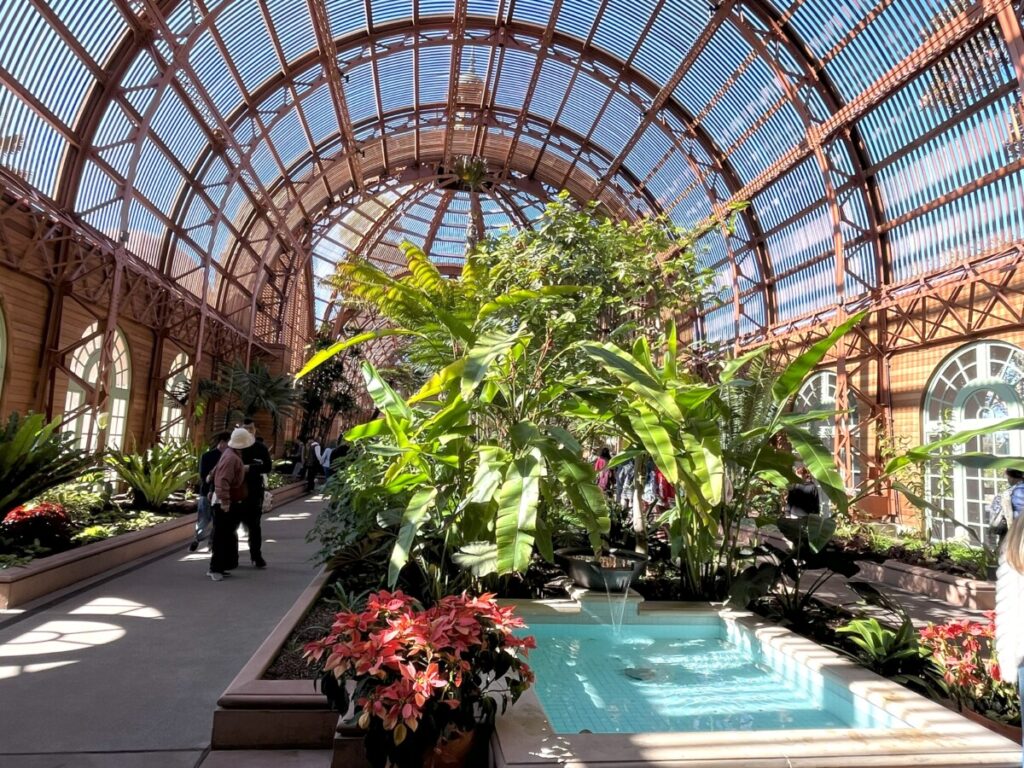
Over the years, the building underwent several renovations. However, it lost much of its earlier character. Recently, Forever Balboa Park completed the first phase of a $28 million restoration of the interior of the building. Soon, a second phase will update the exterior gardens and rebuild the pergola.
Eastern Side of Balboa Park
Walking eastward, we passed by the Casa del Prado. Home to several theatre groups and garden associations, the building with an ornate facade is a reproduction. The original building, which was never designed to be permanent, served as the Varied Industries and Food Products Building during the 1915 Expo. Before demolition could begin, the military used the building as barracks and a post office for sailors, and then from 1919 to 1930, the San Diego County Farm Bureau used the building for exhibits during the San Diego County Fair. After a few years of nonuse, the building once again housed food-related exhibits during the 1935-1936 California-Pacific International Expo. After a stint as part of the Naval Hospital during WWII, the temporary location for the San Diego County Library, and rehearsal space for the Junior Civic Ballet, the building showed signs of deterioration with fallen plaster, termites, and dry rot. In 1971, the current building replaced the original building, much to the chagrin of citizens who wanted a parking lot or open green space area.
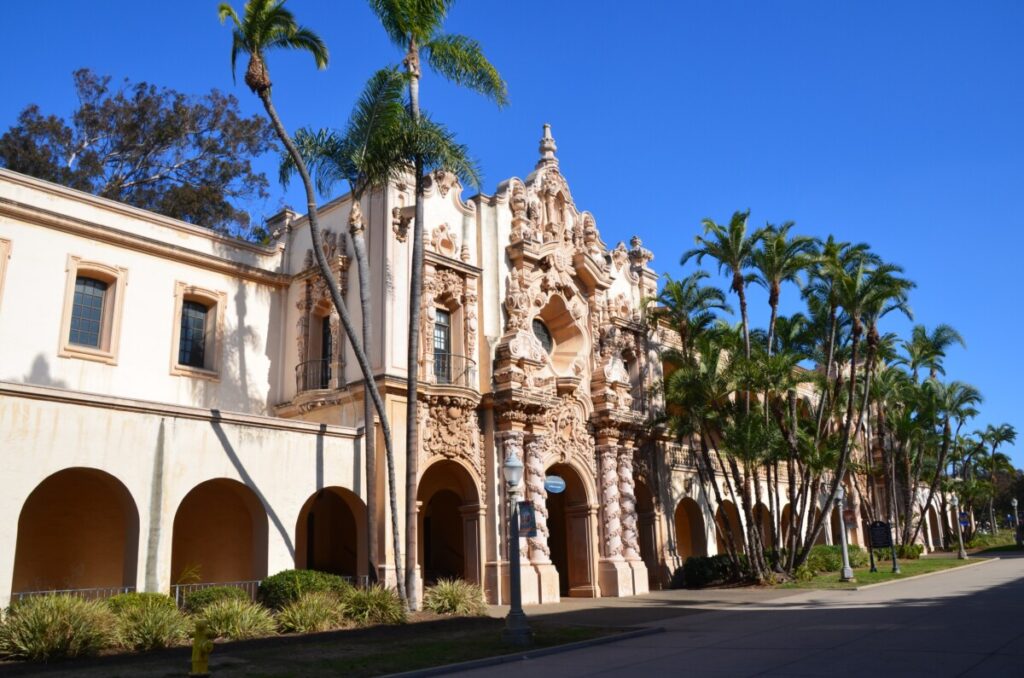
We soon came to the San Diego Natural History Museum (the Nat), which occupied three different spots at Balboa Park before settling into its current building in 1933. Funds ran out during construction (in the middle of the Depression), so builders decided to finish only two of the four wings. It wasn’t until 2001 that a 90,000-square-foot expansion completed the building as originally designed.
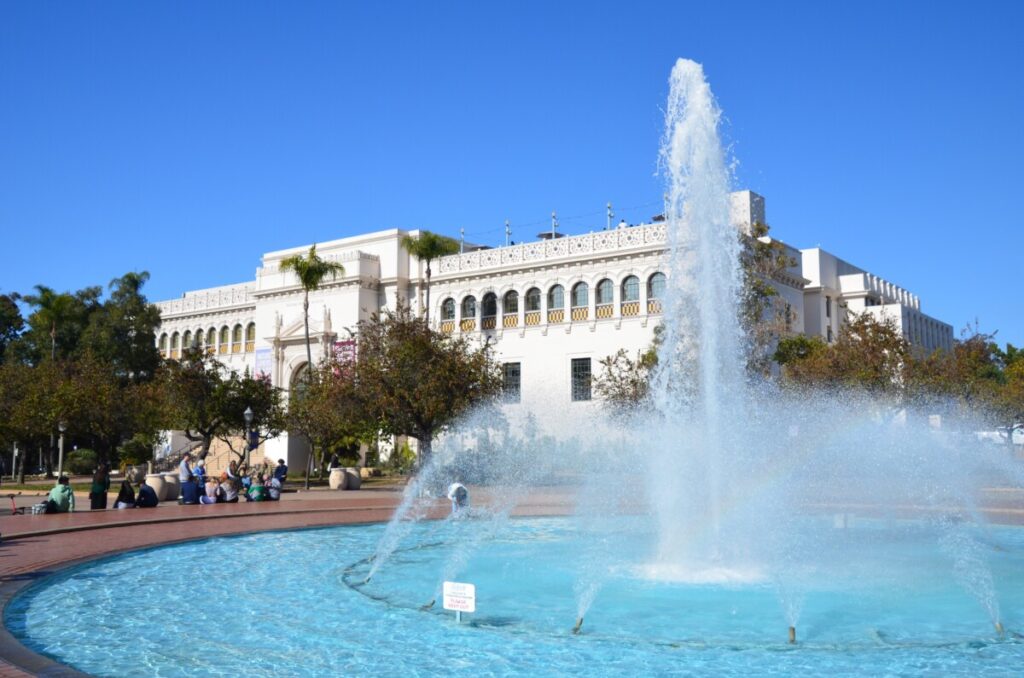
Desert Garden and Rose Garden
The Desert Garden and Inez Grant Parker Memorial Rose Garden lie across Park Boulevard. We crossed the busy street using the elevated pedestrian bridge to reach the gardens. The Desert Garden, which covers 2.5 acres, contains 1,300 drought-tolerant plants. Concrete walkways took us past unusual-looking cactus plants and other desert species.
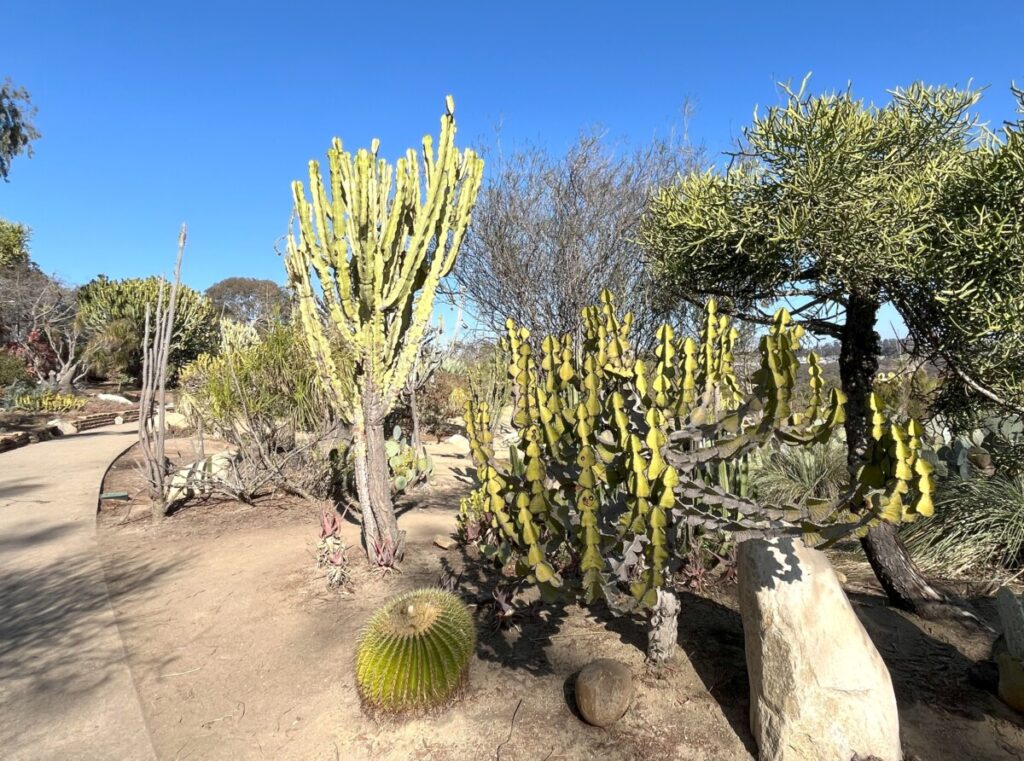
Adjacent to the Desert Garden is the Rose Garden. Where everything in the Desert Garden exhibited browns and greens, the Rose Garden flourished in colors of reds, pinks, and yellows.
The award-winning garden contains over 130 varieties of roses and typically blooms from March to December. The San Diego Rose Society has an excellent website detailing the garden’s history and photos of Balboa Park’s earlier rose gardens.
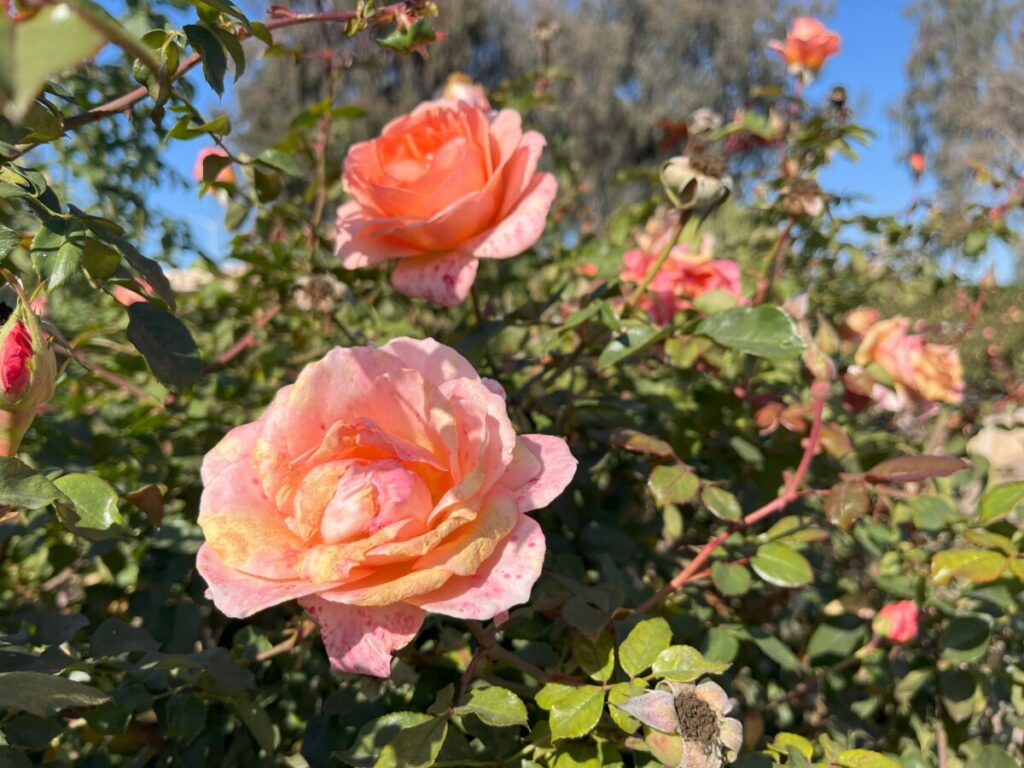
Casa del Balboa
We crossed back over Park Boulevard to meet up with DH (Dear Hubby), who had toured the San Diego Model Railroad Museum. Located inside the Casa Del Prado (directly across the plaza from Casa Del Balboa), the museum boasts the largest model railroad collection in North America.
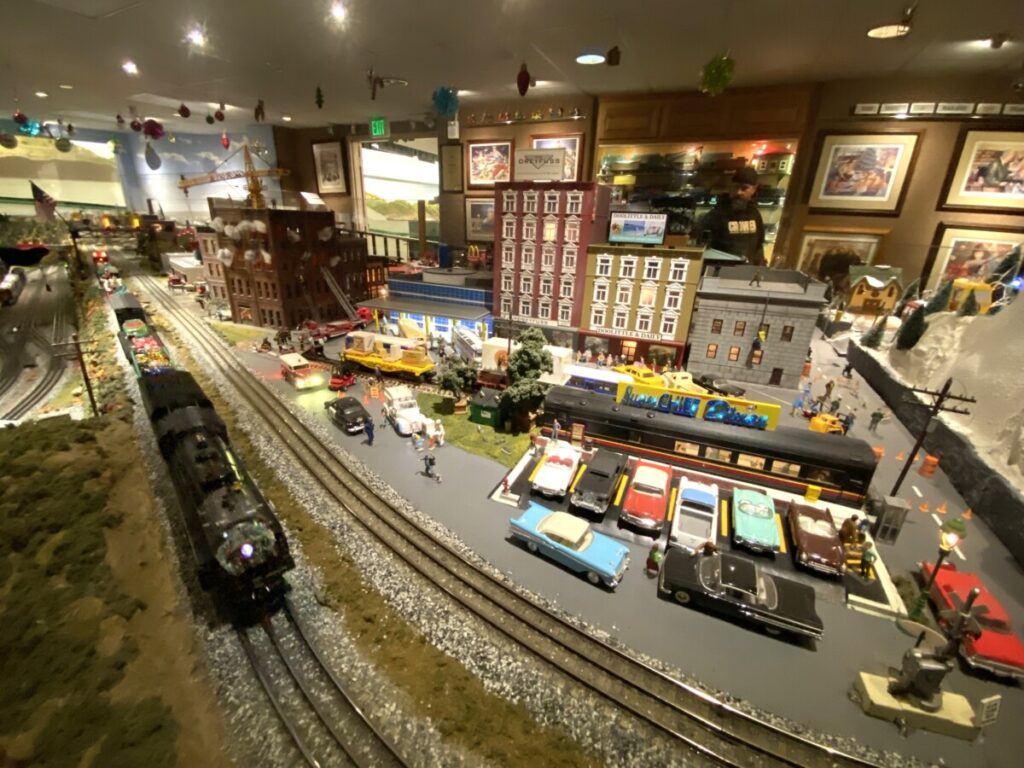
Casa del Balboa also houses the San Diego History Center, Museum of Photographic Arts (MOPA), and the Balboa Art Conservation Center. Initially built as the Commerce and Industries Building for the 1915 Expo, the building became the Canada Building. Other purposes for the building included barracks during WWI and one of the first homes of the San Diego Museum of Natural History. The building, renamed the Palace for Better Housing for the 1936 Expo, showcased modern housing designs. Lumber, glass, and plumbing companies held exhibits inside the building during the 1936 Expo as well.
Serving as part of the Naval Hospital during WWII, the building later hosted electric shows and conventions, earning the nickname Electric Building. In 1978, fire destroyed the building and aircraft inside the San Diego Aerospace Museum, which had occupied the building since 1965. Fortunately, fundraising efforts by the Committee of 100, led by Bea Evenson (of the Bea Evenson Fountain across from the Nat), secured funds to rebuild the structure. In 1980, the San Diego Air and Space Museum moved into its new home in the former Ford Building at the southern end of Balboa Park.
Conclusion
This is just the tip of the iceberg regarding Balboa Park, and just one small section of the park at that. We didn’t have time to see the San Diego Zoo or all the museums at the Pan American Plaza. One could spend weeks and months visiting all the museums, gardens, and attractions. For more information, see the park’s website here.
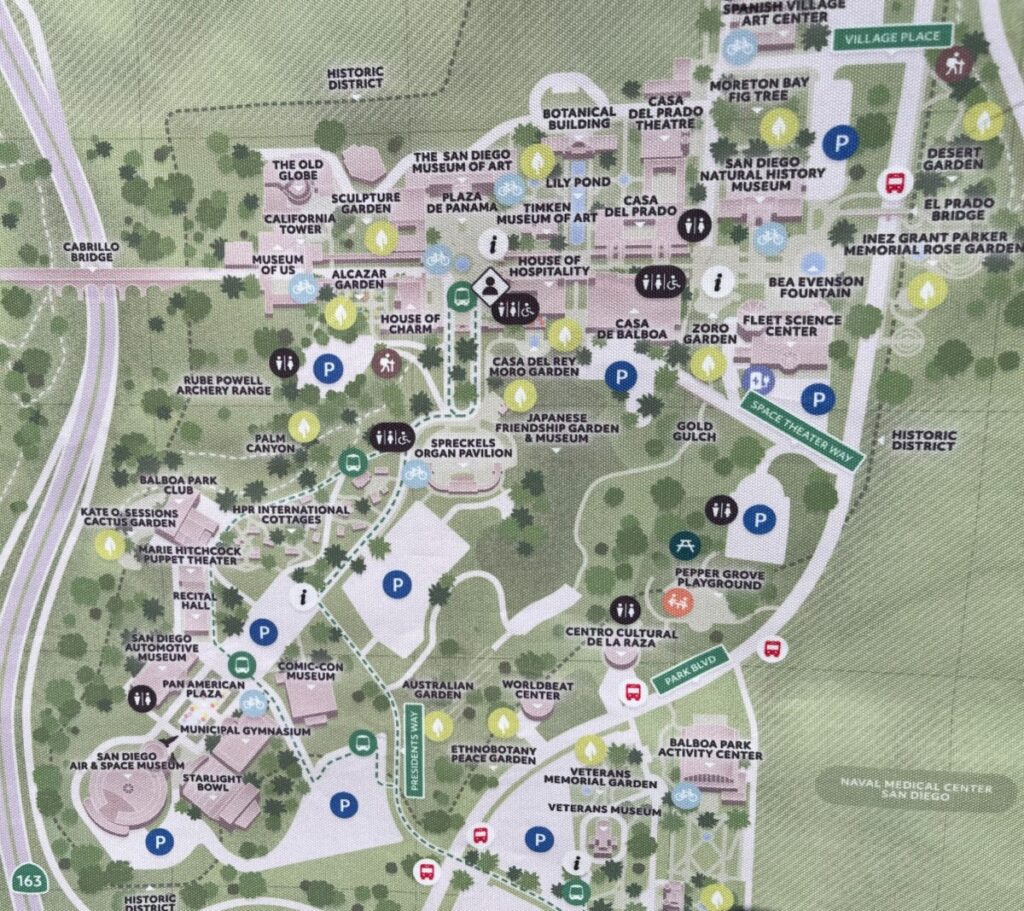
Check the calendar and websites for museum hours. For example, the House of Pacific Relations International Cottages only opens its doors on weekends, the San Diego Automotive Museum is closed on Mondays, and the San Diego Museum of Art is closed on Wednesdays. Also, admission prices vary by museum. The Balboa Park Explorer Pass provides discounted tickets to many, but not all, of the museums.
La Jolla
No trip to San Diego is complete without a stop at La Jolla. The tony neighborhood offers miles of shoreline along the Pacific Ocean. Although only 10 miles north of downtown San Diego, La Jolla offers a small-town vibe with access to numerous beaches.
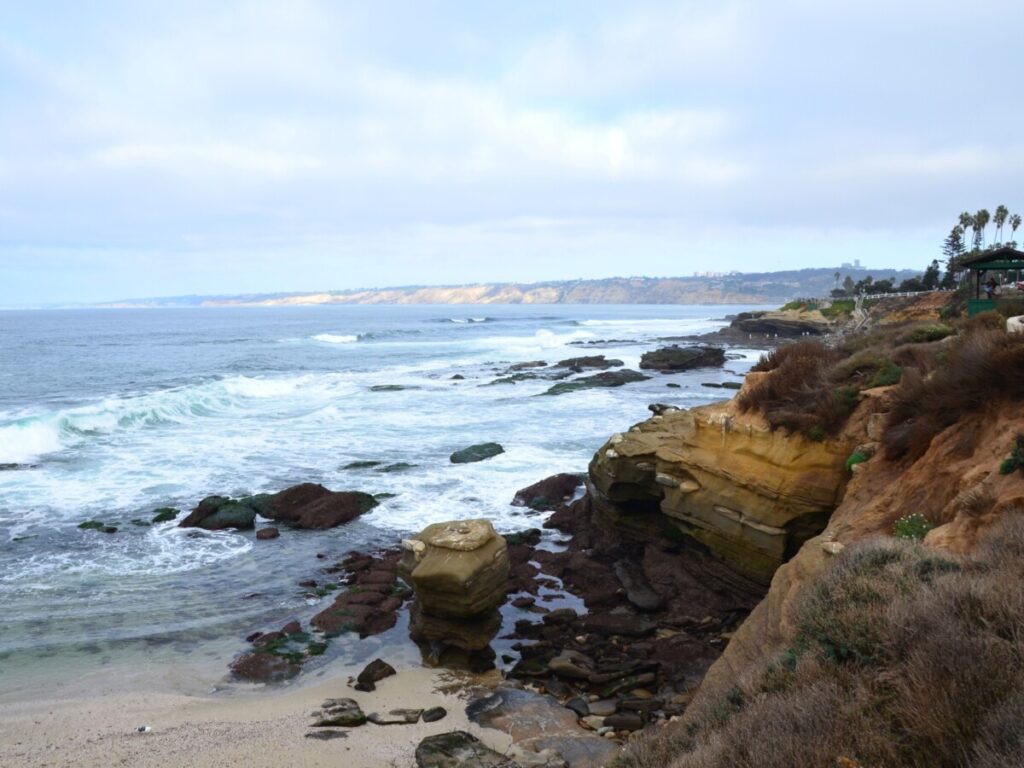
But more than just another photogenic spot, the La Jolla shoreline attracts sea lions and harbor seals. We started at the Children’s Pool, a small beach area surrounded by a concrete boardwalk. Seals like to “haul out” of the ocean on the sand and rocks. For this reason, the beach is closed during pupping season from mid-December through May. However, the boardwalk allows visitors to walk almost to the ocean level and get closer views of the surf and the seals.
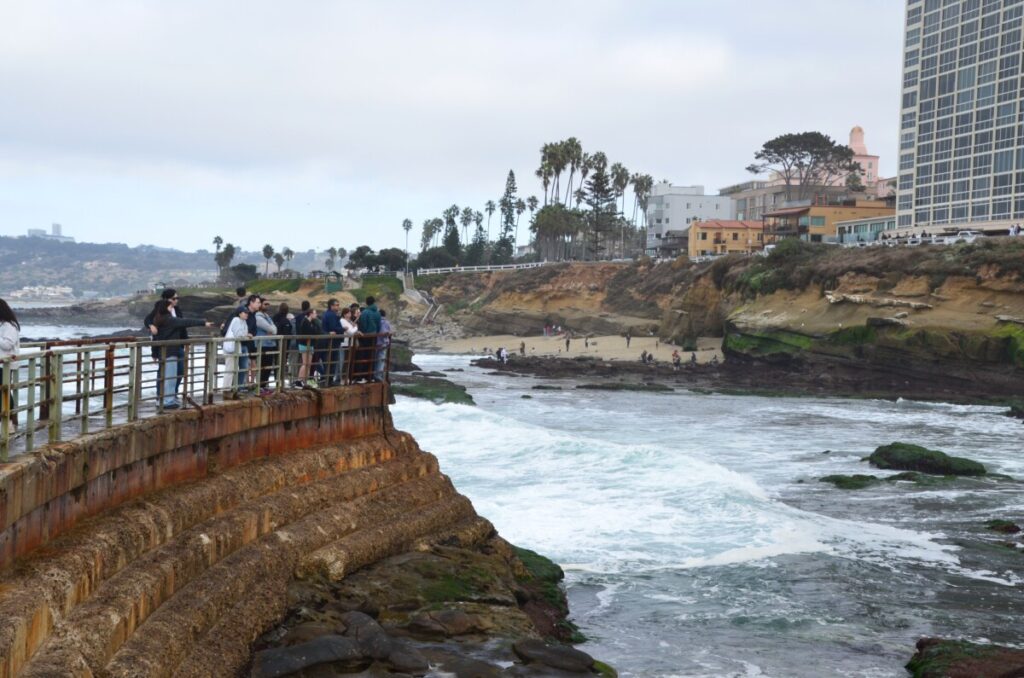
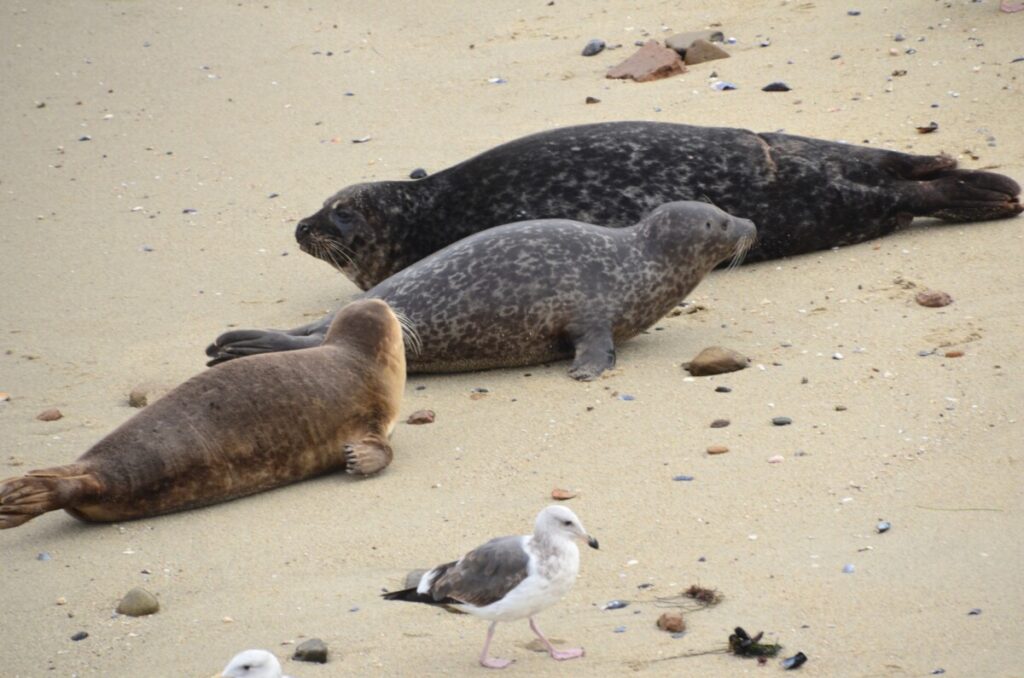
Walking further north, near La Jolla Point, we heard loud barking. When we got closer, we saw massive groups of sea lions almost lying on top of one another on the rocks.
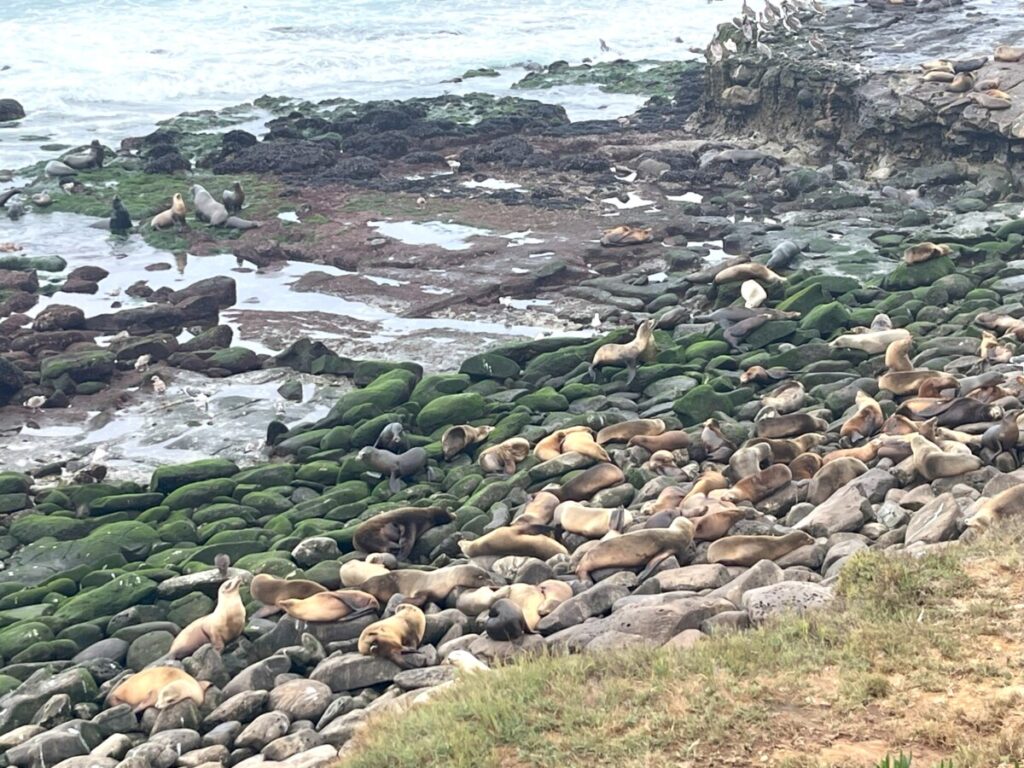
Compared to harbor seals, sea lions are larger, tan or brown, and have ear flaps. They are more social creatures and welcome all tourists who watch them.
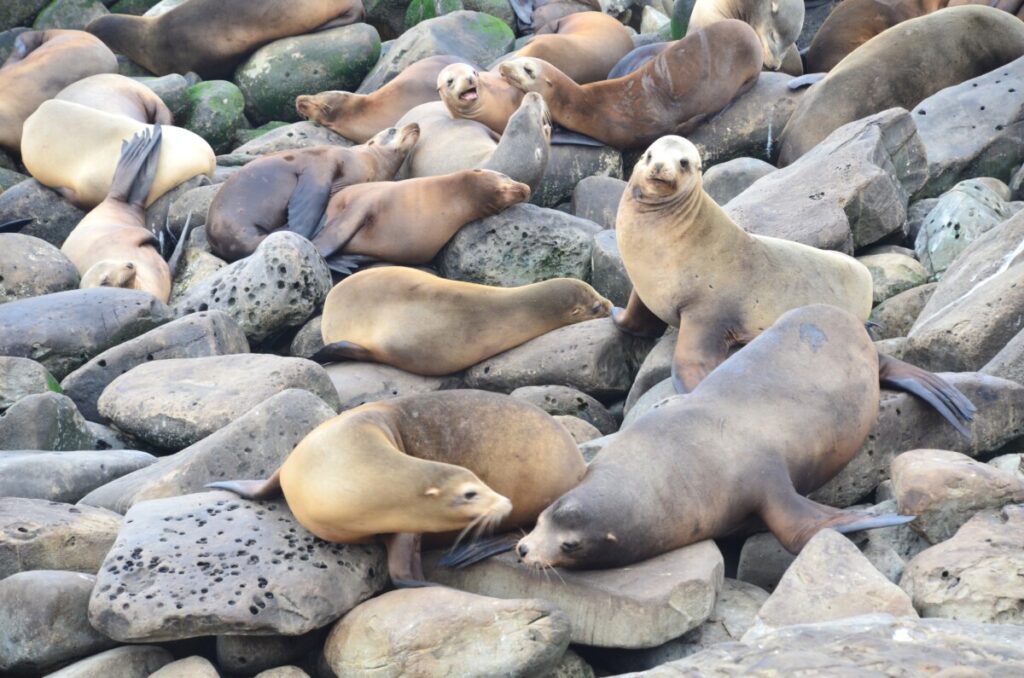
When our short time in San Diego ended, we headed north to Los Angeles. I’ll post about our stay in Laguna Hills soon.
